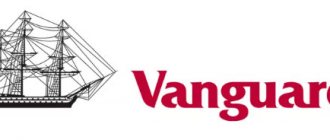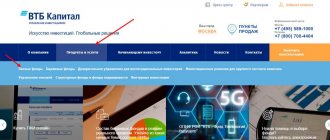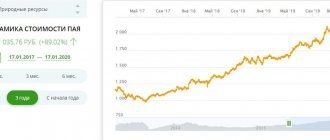On December 9, 2021, Tinkoff rolled out 3 new exchange-traded funds to the Moscow Exchange.
Briefly about the funds:
- BTIF TSPX - for the S&P 500 index. Commission - 0.79%.
- BUIF TBIO - as part of shares of pharmaceutical and biotechnology companies. Commission - 0.79%
- BIIF TIPO - invests in shares after their IPO. Commission - 0.99%.
All funds are “penny” - trading starts at less than $0.1 per share. Funds are traded in dollars.
Traditionally, Tinkoff does not charge its clients a fee for the purchase and sale of “native” funds (zero brokerage commission and zero exchange commission). The result is a small saving. I wrote here how much zero commissions affect future profits.
And now more about each fund.
Description of the fund
The mutual fund invests funds of shareholders in shares of the foreign fund iShares Nasdaq Biotechnology ETF. It, in turn, follows the dynamics of the NASDAQ Biotechnology Index. The mutual fund has been operating since 2015. The number of shareholders is almost 8,000 people.
The investor is not required to manage investments. This is a passive investment. In practice, this means that the management company will not experiment with the composition of the fund on the stock exchange: all shareholders’ money is put into a common pot, and it is known in advance where exactly it will be invested. The profitability of the shares depends on the dynamics of the assets included in the mutual fund.
ETFs include shares of highly specialized companies. Therefore, investing in it is highly risky, but the return is also promised accordingly. The management company itself positions it as an exchange tool for diversifying the overall market portfolio. Putting all your money into it may be unnecessarily risky.
This type of investment is passive, which means there is no experimentation with the composition: money is simply collected in a general “cash”, after which it is invested in a specific asset. The growth or fall in the value of the share, and, as a consequence, the income of investors, depends on its dynamics.
BPIF "Tinkoff S&P 500" - TSPX
Tinkoff S&P 500 - this is the correct name of the fund (English words in Russian letters, like all the other names below).
The TSPX mutual fund invests in 500 companies included in the S&P 500 index (Captain Obvious). Unlike its fellow competitors, Tinkoff does not use a foreign fill fund, but buys shares directly. Tracking the S&P 500 Total Return Index (total return including dividend reinvestment).
Whether this is good or bad, time will tell. The main problem of new funds being launched is the acute lack of money to accurately replicate the index. Especially one of the most expensive S&P 500. To buy 500 securities, and even in the required proportion, you need a couple of tens of millions of dollars. BTIF TSPX starts with “only” 250 million rubles. There will always be some kind of error.
On the market (as far as I know), only two management providers repeat the S&P500 index independently. This is Finex with its FXUS ETF and Sberbank - SBSP. The rest simply act as intermediaries between us and cheap foreign ETFs. This is what VTB and Alfa do.
Commission for mutual fund TSPX is 0.79% per year. In theory, one of the lowest rates on the market (among competitors)... I compared the commissions - the Tinkoff fund has the LOWEST RATE for management. The closest competitor, the VTBA mutual fund from VTB, asks for 0.88%.
SBSP from Sber has - 1% / FXUS - 0.9% / AKSP - 1.08% (indicated full commissions, taking into account the costs of owning spacer funds).
But there is one big BUT that is not taken into account by many. This is a DIVIDEND TAX.
The TSPX fund itself does not pay dividends, but reinvests them in the value of the unit (like all Russian competitors). But the divas received within the fund are always taxed. And it can be different: from 15 to 30%.
The TSPX mutual fund has a dividend tax rate of 30%.
With a dividend yield of the S&P 500 index of 2%, additional losses from taxes (which will naturally affect the value of shares and investor profits) will vary from 0.3 to 0.6%. This value can be safely added to the official management fee.
The result is the following picture:
| Fund ticker | Management fee | Dividend tax rate | Losses on taxes | Total expenses of the investor |
| TSPX | 0.79% | 30% | 0.6% | 1.39% |
| FXUS | 0.9% | 15% | 0.3% | 1,2% |
| VTBA | 0.88% | 15% | 0.3% | 1,18% |
| SBSP | 1% | 30% | 0.6% | 1,6% |
| AKSP | 1.08% | 30% | 0.6% | 1,68% |
Taking into account the tax on dividends, the Tinkoff S&P 500 fund is no longer the lowest cost fund.
On the main page of the fund (at Tinkoff) there is a beautiful profitability graph with different statistics. Since 1988.
Total Return Index - S&P 500 Total Return Index
In general, everything is correct. But I want to make a couple of accents, in case someone missed it.
- The real average annual return will be 0.79% less (minus the fund’s commissions).
- Returns are shown taking into account reinvestment of dividends, but taxes are not taken into account. You can still safely lose at least half a percent.
- For the example in the chart (and calculation of profitability), a relatively successful period was selected. Immediately after the major market crash in 1987 (more than 30%). If we take, for example, the period from the beginning of 2000, then at first the investor would have found himself in the “lost decade”. Capital returned to pre-crisis levels only in 2011. And the average annual return (above inflation) would fall from 8.19% to a modest 4.1% (and if we subtract taxes and fund commissions, the real return would drop by another factor of 1.5). In general, over the long term, I would expect a return of 5-6% above inflation (after deducting all commissions and taxes). Which, in principle, is also quite good, considering that the profitability is in dollars.
A thought suddenly struck me, to which I don’t yet have an answer.
Look. Currently the fund is trading at $0.09 “with kopecks”. Below are the quotes in the glass. The best buy-sell offer is at $0.0938 / 0.0939.
How so? After all, in our payment system (dollars/rubles) only two digits after the decimal point are used. Maybe less than one kopeck/cent. But here they want 9.3... cents.
I bought one lot of the fund. This is what was displayed... (note the purchase price).
I specifically checked - my cash dollars in my account after the purchase decreased by $0.09.
I have two options for events.
- It turns out that with a share price of 0.0939, the broker rounded (forgave) me as much as $0.039. It certainly doesn’t sound very respectable, but damn, that’s as much as 4% of the share price.
- The broker somehow takes into account these pennies (from the third number after the decimal point) and when it reaches a whole cent, he writes off a WHOLE CENT.
Does anyone have answers to the question? Write, it would be interesting to know the truth.
To summarize the TSPX fund: another fund for the S&P 500 index. In terms of commissions, it’s average. The quality of management is still unknown. Kudos to TSPX for choosing to compile the index themselves.
Investment conditions
| Name | Sber-Biotechnologies |
| UK | "Sber Asset Management" |
| Minimum investment amount | 1,000 rubles |
| Management commission and other expenses | From 0% when purchasing shares online; for redemption of shares - from 0% to 2% depending on the term, other commissions are included in the price |
| Taxes and tax benefits | Tax benefits for holding shares for more than three years |
| Recommended investment horizon | From 1 year |
| Average annual return for the last 3 years | 26,04% |
Stock prices: dynamics and value today.
Information about the share price and value is posted on the bank’s website in the public domain.
The table “Value Dynamics” reflects changes in the price of Sberbank - Biotechnologies shares for three years: from 2015 to 2021. Using a chart, it is easy to conduct an analytical review and gain an understanding of the development of the market situation by comparing the price of a share in the time periods of interest.
| 19.10.2018 | 22.10.2018 | Per day | Since the beginning of the year | For 1 year | In 2 years | In 3 years | |
| Share, rub | 1 024,89 | 1 004,56 | -1.98% | 13.5% | 9.62% | 22.79% | 4.81% |
Table 1.
Fund composition
The composition of the portfolio is poorly diversified. It includes shares of companies related to the biotechnology sector. Therefore, if a crisis occurs in this segment (for example, if vaccination is unsuccessful), then investors will face losses.
The largest part of the open investment fund is the Biotechnology sector (78.9%). The remaining part is broken down by industry as follows:
- Pharmaceutical companies producing various drugs and vaccines - 11.4%;
- Biological sciences and technologies – 8.1%;
- Medical services – 1.3%;
- Other -0.2%.
Broken down by company, the structure is as follows. The largest share is accounted for by Amgen Corporation 8.0%. The well-known Moderna is also present in the portfolio - 4.4%. In general, companies have approximately the same share in the portfolio.
How to invest?
You can do this in 3 ways:
- remotely through your Personal Account. You can select, purchase, change or close a share without visiting a branch if you pre-register on the government services portal ( gosuslugi.ru );
- in the branch of the management company. There you can find out any information on the funds and register the necessary papers. Payment is made at the bank;
- at a Sberbank branch. Here you can decide which fund to invest money in, register all the required papers and make a payment.
Payment for the investment is possible in Sberbank branches, in Sberbank Online without paying additional fees, or in some other bank according to its prices.
Profitability
Over the past three years, the mutual fund has shown a return of 78.13%. However, such high growth comes with an increased level of risk. In February 2021, the mutual fund showed negative dynamics - 4.15%. It is possible that the optimal moment to enter the industry has already passed. Accordingly, according to forecasts, there is a risk of entering at the maximum. The easiest way to evaluate the growth in profitability is on a chart.
Information about Mutual Fund Biotechnology
The funds of the Sberbank Biotechnology Mutual Fund are invested in large enterprises in the biotechnology industry through the purchase of the NASDAQ Biotechnology ETF . This fund includes shares of the largest international pharmaceutical and biotechnological organizations involved in the production of new drugs.
“Sberbank – Biotechnologies” is a retail fund; applications for the purchase, exchange and redemption of shares can be submitted on any working day. The price of investment shares can rise or fall; investments made earlier do not establish future profitability . Government bodies do not ensure profitability from investments in funds. Before purchasing a share, be sure to read the rules of trust management of the fund.
If we look at the dynamics of the price of 1 share, then over two years it has fallen in price by almost 26%, over the last year it has increased in price by almost 13%. Despite the reduction in price, analysts give a positive forecast and promise an increase in the price of the share in the long term. As of December 28, 2017, the cost of 1 share was 889 rubles, the value of net assets was 2.3 billion rubles.
Advantages and disadvantages
Before investing in this instrument, evaluate the financial risks and prospects. Below we present the main advantages and disadvantages of “Biotechnologies”.
Pros:
- high level of profitability;
- good diversification between companies in the pharmaceutical industry and the biotechnology sector;
- the ability to withdraw funds without losing accumulated income;
- the possibility of interest-free exchange of shares for shares of another mutual fund;
- minimum entry price;
- investing in a promising industry;
- professional fund management by a qualified manager;
- constant increase in profitability;
- passive income.
Minuses:
- high level of risk;
- high commissions;
- inability to influence the result;
- a weak level of overall industry diversification (investing only in the biotechnology sector may turn out to be unnecessarily risky);
- excessive hype around areas related to pharmaceuticals and biotechnology. In this regard, the value of the share may be overestimated.
One of the main disadvantages is associated with increased risks. Firstly, shareholders' funds are invested in the riskiest type of securities - shares. At the same time, all assets are distributed only between companies in the pharmaceutical industry, which further increases the risks. The activities of such corporations are always associated with a high level of risk: their shares can drop sharply at any moment. Additional problems may arise due to the fact that investments are made in US dollars. A fall in the exchange rate will have a negative impact on the value of the shares. ·
Asset management: how to become a member
3 ways to become an investor:
- Remotely through your personal account or mobile application;
- When visiting a branch of the Savings Bank of Russia;
- When visiting the office.
Any questions you may have regarding the project can be clarified by calling the Savings Bank hotline at 8(495)-5000-100. They will also help you register here.
Note! If the client has a “Premier” package from Savings Bank, for all questions, he can contact his personal manager, whose phone number is indicated in his profile.
Investing funds through your personal account
You can become a member using your personal account. Here you will need to register and provide consent.
Investment stages:
- Creating a portfolio.
- Filling out an application on the website about your intention to buy securities. The calculator will help you calculate the size of the share and the possible return on investment.
- Filling out the form.
- Purchase of a share (the account must contain sufficient funds to purchase the security).
Investing when visiting an office
When contacting the office, you must go through the following steps:
- Portfolio formation. The manager will help you submit an application for the purchase of securities, choose the size of the down payment and the investment period.
- Filling out a questionnaire (documentary proof of identity), which is necessary to open an account where the profits will be credited.
- Transfer to the account of the Open Investment Fund RFI (open-ended mutual investment fund of market financial instruments) of the amount for the purchase of a share. Cash payment is also possible (no commission).
Comparison of TBIO ETF with foreign analogues
Foreign funds have significantly larger capitalization and lower management fees. Let's look at how TBIO's profitability differs from its foreign counterparts since the fund's launch and over the last month:
| ETF name | Fund volume (NAV), USD | Commission, % | Profitability for 1 month | Profitability since December 2020 |
| TBIO from Tinkoff | 8835062 | 0.79 | 7,03 % | 9,83 % |
| IBB from iShares | 10830000000 | 0.47 | 7,53 % | 8,98 % |
| NBI - NASDAQ Biotechnology | — | — | 7,60 % | 9,45 % |
As we can see from the table and graph below, the considered BIIF in terms of profitability is practically no different from its analogues and the target index. Although, over a long period of time, a lag may appear due to the taxation of dividends on shares from the fund.
Comparison of TBIO's profitability with NBI and IBB
How to trade NASDAQ indices
NASDAQ indices are a convenient tool for traders and investors who want to work with shares of high-tech companies. These indicators can be invested in through a variety of financial products, including exchange-traded funds (ETFs), active mutual funds, options, CFDs and futures. The latter are among the most popular instruments due to their high liquidity, the absence of the need for physical delivery of the underlying asset and the ability to trade indices with minimal costs.
Traders most often use NASDAQ index futures to implement speculative trading strategies based on technical analysis. Also, index contracts in this group are suitable for hedging. For example, owners of large positions in agricultural commodities buy futures on NASDAQ , counting on the inverse correlation of these assets.
So, the NASDAQ indices reflect the capitalization of shares of high-tech companies, including software developers, Internet service providers, computer and medical drug manufacturers, as well as financial companies. You can trade these indicators using futures traded on the CME. Traders use these contracts for speculative trading based on technical analysis, as well as for hedging. Currently, there is a high probability of continued growth in the NASDAQ indices, due to the continuation of the quantitative easing program in the United States.
Is the TBIO ETF worth buying?
Without a doubt, the TBIO fund from Tinkoff can be called unique on the Russian market. There are currently no analogues from other ETF and BPIF providers. Naturally, we do not consider purchasing ETFs through foreign brokers, or through the St. Petersburg Stock Exchange (for qualified investors). Although, if you apply the long-term holding tax deduction for TBIO, the returns may be comparable. Also, the field of biotechnology is currently one of the most promising. Therefore, we believe that it is worth having this fund in your investment portfolio, including for the purpose of diversifying investments.
Advantages and disadvantages of investing in Mutual Fund Biotechnology
Positive sides:
- profit can be made without specialized education and professional skills; the share is managed for the client by specialists;
- continuous stable access to all data relating to the deposit;
- reliability of investment. Statistics indicate the high professionalism of Sberbank employees and their selection of the optimal investment portfolio;
- the likelihood of changes in conditions through the Personal Account;
- small minimum share size, which makes investments accessible to many citizens;
- Convenient and quick registration of investment funds, you only need a passport;
- high return on investment;
- Tax collection is carried out according to a transparent scheme, there are no hidden fees;
- if the funds are in the mutual fund for a long time, then there are discounts on the commission for the purchase or redemption of a share;
- state participation ensures the reliability of the fund; investors will not suffer losses even if the fund goes bankrupt.
Negative sides:
- existence of commissions;
- tangible benefits from investing can only be obtained in the case of long-term investment, from a year or more.
InvestCase
➡️ In this article, we'll look at the 10 best biotech stocks under $6 in 2021. You can skip our comprehensive analysis of the biotech industry and go straight to the 5 best biotech stocks under $6 in 2021.
The global biotechnology sector is expected to grow to more than $2.5 trillion by the end of this decade. The industry's growth is expected to be driven by innovation, research and new scientific discoveries. There are many reasons to be hopeful about the future of biotech, one of the main ones being the sector's performance in 2021, a year ravaged by the worst pandemic in more than a century that has killed millions of people around the world. Even in a dismal twelve months, the biotech sector has outperformed market expectations.
In 2021, while most biotech companies spent much of the year finding a cure for the coronavirus, the U.S. Drug Agency approved 53 new drugs. This is the second-highest number of drugs approved in a single year. Some of the notable mentions in the new drug list include Danyelza, a childhood neuroblastoma drug developed by Y-mAbs Therapeutics, Inc. (NASDAQ: YMAB), and Trodelvy, a triple-negative breast cancer treatment developed by Gilead Sciences. Inc. (NASDAQ: GILD).
Catalysts for Growth in Biotech Stocks
Most biotech stocks hit all-time highs in 2021. The SPDR S&P Biotech ETF is up nearly 50% for the year, and other indices such as the NASDAQ Biotech Index have also posted double-digit gains over the past twelve months, outperforming other sectors of the economy. economy. In 2021, governments around the world will spend billions of dollars on biotech companies mass producing COVID-19 vaccines, such as Moderna, Inc. (NASDAQ: MRNA), Pfizer Inc. (NYSE: PFE) and Johnson & Johnson (NYSE: JNJ).
The trends highlight that there is also cause for concern. Drug prices are skyrocketing, and there are several world governments discussing policies to reduce the cost of drugs needed to keep terminally ill patients alive. With environmental concerns overshadowing nearly every major global summit, the biotech sector is expected to increasingly play a role in addressing issues such as plastic waste dumping in the oceans and landfills polluting fertile soil. An estimated 14 billion pounds of trash, mostly plastic, is dumped into the world's oceans each year.
The biotech sector is also becoming a major industry, offering many jobs and opportunities for growth. For example, in Florida alone, the life sciences industry serves more than 83,000 people. Another possible indicator of growth is breakthroughs in gene research. However, investors should also be wary of scams. For those still looking for a route into the sector, cheap biotech stocks could be the answer. The case of Theranos CEO Elizabeth Holmes illustrates the dangers of high-risk investment strategies based on hedge funds.
With that context in mind, here's our list of the 10 best biotech stocks under $6 in 2021. Best Biotech Stocks Under $6 in 2021
ℹ️ 10. MediciNova, Inc. (NASDAQ:MNOV)
Number of hedge fund holders: 4 Price as of April 19, 2021: $4.48 per share.
MediciNova, Inc. (NASDAQ: MNOV) is a California-based biotechnology firm that develops new therapeutics with a focus on neurological, respiratory and liver diseases. Products the company is developing include an oral anti-inflammatory and neuroprotective agent for the treatment of neurological disorders and a selective beta-2 adrenergic agonist for the treatment of asthma exacerbations. MediciNova was founded in 2000 and is ranked tenth on our list of the top 10 biotech companies under $6 in 2021.
At the end of the fourth quarter of 2021, 4 hedge funds held stakes in the company worth $2.4 million, up from 5 in the previous quarter worth $2.2 million. The company announced in March that it was shutting down research to develop a COVID-19 vaccine to focus on other drugs. The firm also recently announced a partnership with the Biomedical Advanced Research and Development Authority to medically combat lung damage caused by chlorine gas.
ℹ️ 9. Voyager Therapeutics, Inc. (NASDAQ: VYGR)
Number of hedge fund holders: 7 Price as of April 19, 2021: $4.47 per share.
Voyager Therapeutics, Inc. (NASDAQ: VYGR) is a Massachusetts-based biotechnology firm that specializes in gene therapy and developing treatments for patients suffering from severe neurological diseases. One of the products the company offers is VY-AADC, an open-label trial drug for the treatment of Parkinson's disease. In addition, drugs are being developed for the treatment of amyotrophic lateral sclerosis, Huntington's disease, Friedreich's ataxia; and tauopathies, including Alzheimer's disease, progressive supranuclear palsy and frontotemporal dementia.
Voyager has agreements with several universities and other pharmaceutical firms for joint projects, including partnerships with Thermo Fisher Scientific and Fujifilm Diosynth Biotechnologies to support the development of gene therapy programs. Voyager was founded in 2013 and ranks ninth on our list of the 10 best biotech stocks under $6 in 2021. Of the hedge funds, New York-based Armistice Capital has the most shares in the company, 3.3 million, worth more than $24 million.
ℹ️ 8. OncoCyte Corporation (NASDAQ: OCX)
Number of hedge fund holders: 6 Price as of April 19, 2021: $4.45 per share.
OncoCyte Corporation (NASDAQ: OCX) is a California-based biotechnology firm specializing in molecular diagnostics. The company is committed to providing care products for lung cancer patients. It also develops laboratory tests to detect cancer. One of the products the company offers is called DetermaRx, a molecular test for early-stage lung adenocarcinoma; and DetermaIO, a proprietary gene expression assay. The biotech company was founded in 2009 and is ranked eighth on our list of the 10 best biotech companies under $6 in 2021.
Earlier this month, the company announced that one of its drugs shows a correlation with immunotherapy responses in bladder cancer. The company said the results added value to drug test results related to lung and breast cancer. Earlier this year, OncoCyte CEO Andrews Asbury bought more than $50,000 worth of stock in the company. At the end of the fourth quarter of 2021, 6 hedge funds held stakes worth $50 million, up from 5 in the previous quarter worth $29 million. Neil S. Bradsher's Broadwood Capital is the company's largest shareholder, owning 14.7 million shares worth $35.2 million.
ℹ️ 7. GeoVax Labs, Inc. (NASDAQ:GOVX)
Number of hedge fund holders: 3 Price as of April 19, 2021: $4.47 per share.
GeoVax Labs, Inc. (NASDAQ: GOVX) is a Georgia-based biotechnology firm that develops vaccines for infectious diseases and cancer. The company was founded in 1988 with the goal of developing an effective vaccine against HIV-1, and has since expanded in scope. The firm is involved in the development of vaccines against COVID-19, human immunodeficiency virus (HIV); Zika virus; malaria; Ebola virus, Sudan virus, Marburg virus and Lassa virus, as well as therapeutic vaccines against HIV, chronic hepatitis B infections and solid tumors.
It has cooperative agreements with many laboratories and medical institutions in the United States, including the National Institute of Allergy and Infectious Diseases of the National Institutes of Health; HIV Vaccine Trials Network; and the Centers for Disease Control and Prevention. Among the hedge funds, New York-based Armistice Capital owns the majority of the company's shares, with 391,700 shares worth more than $0.8 million. Sabby Capital came in second on the list with 275,695 shares worth nearly $0.3 million.
ℹ️ 6. BELLUS Health Inc. (NASDAQ: BLU)
Number of hedge fund holders: 14 Price as of April 19, 2021: $4.61 per share.
BELLUS Health Inc. (NASDAQ: BLU) is a Canadian company that develops drugs to treat chronic cough and other hypersensitivity disorders. One of the company's flagship projects is BLU-5937, a small molecule oral P2X3 receptor antagonist that is undergoing phase II clinical trials for the treatment of chronic cough and chronic itching. The company has a market capitalization of over $350 million and was founded in 1993.
In December, the company announced that it had opened a marketplace for the sale of up to $50 million worth of shares in the company. In November 2021, investment advisory firm Evercore began coverage of BELLUS with an Outperform rating. Evercore set a $12 price target, nearly double Wall Street's average price target, for BELLUS stock with 400% upside potential. At the end of the fourth quarter of 2021, 14 hedge funds held $62 million worth of shares, up from 8 in the previous quarter.
ℹ️ 5. Seelos Therapeutics, Inc. (NASDAQ: SEEL)
Number of hedge fund holders: 4 Price as of April 19, 2021: $5 per share. Seelos Therapeutics, Inc. (NASDAQ: SEEL) is a New York-based biotechnology firm that develops and markets drugs related to the treatment of the central nervous system, respiratory and other diseases. Products the company markets include SLS-002, an intranasal racemic ketamine for the treatment of acute suicidal ideation and behavior in patients with major depressive disorder. It also produces SLS-005, a protein stabilizer for the treatment of amyotrophic lateral sclerosis, and SLS-006, a dopamine for the treatment of Parkinson's disease.
The company has a market capitalization of more than $411 million and generated annual revenue of more than $375,000 in the fourth quarter of 2021. The company was founded in 2021 and ranks fifth on our list of the 10 best biotech stocks under $6 in 2021. Among hedge funds, New York-based Renaissance Technologies owns the majority of the company's shares - 702,486 - worth more than $1.1 million. Citadel Investment Group came in second on the list with 77,814 shares worth $0.12 million.
ℹ️ 4. Dyadic International, Inc. (NASDAQ: DYAI)
Number of hedge fund holders: 5 Price as of April 19, 2021: $4.85 per share.
Dyadic International, Inc. (NASDAQ: DYAI) is a global biotechnology company headquartered in Florida. Dyadic focuses on improving and applying its proprietary C1 expression system to help developers and manufacturers bring drugs to market. He is also working on the development of vaccines and drugs related to antigens, monoclonal antibodies and Fab antibody fragments. Dyadic has a drug in clinical trials that should help develop a new generation of COVID-19 vaccines. The company ranks fourth on our list of the 10 best biotech stocks under $6 in 2021.
Dyadic has signed research and development contracts with several companies around the world, including the VTT Technical Research Center in Finland, Biotechnology Development for Pharmaceutical Industry, Jiangsu Hengrui Medicine and the Serum Institute of India. The company was founded in 1979. At the end of the fourth quarter of 2021, 5 hedge funds held $0.9 million worth of stakes in the company, up from 4 in the prior quarter.
ℹ️ 3. Eyenovia, Inc. (NASDAQ: EYEN)
Number of hedge fund holders: 4 Price as of April 19, 2021: $4.86 per share.
Eyenovia, Inc. (NASDAQ: EYEN) is a New York-based biotechnology firm that uses a proprietary microdose array printing (MAP) platform to develop therapeutics. The company specializes in developing therapeutic indications for patients with progressive myopia and age-related near vision loss, as well as other eye problems. Also in development is MicroLine, which, if it makes it into clinical trials, will help improve near vision in people with presbyopia.
Another drug in development is MicroPine, which is in clinical development and will help people with progressive childhood myopia. The firm has already signed an agreement with Bausch Health Ireland Limited to develop and market MicroPine in the US and Canada. It ranks third on our list of the 10 best biotech stocks under $6 in 2021. Of the hedge funds, Chicago-based Fairpointe Capital owns the majority of the company's shares—209,526—worth more than $1.2 million.
ℹ️ 2. MediWound Ltd. (NASDAQ: MDWD)
Number of hedge fund holders: 2 Price as of April 19, 2021: $4.91 per share.
MediWound Ltd. (NASDAQ: MDWD) is an Israeli company specializing in the development and production of therapeutics based on patented proteolytic enzyme technology. These therapeutic agents are used to treat severe burns, chronic and other wounds. One of the company's products, called NexoBrid, is used to remove scabs, dead or damaged tissue in adults. MediWound also produces EscharEx, a treatment for chronic and other wounds that is currently in advanced clinical trials.
MediWound Ltd. was founded in 2000 and ranks second on our list of the 10 best biotech stocks under $6 in 2021. In December 2021, the firm entered into an agreement with a UAE company to market and sell NexoBrid in the Middle East market. . Official approval for the treatment for severe burns is expected within a year. At the end of the fourth quarter of 2021, 2 hedge funds held $2.5 million worth of stakes in the company, the same as the previous quarter with $2.4 million worth of stakes.
ℹ️ 1. Amarin Corporation plc (NASDAQ: AMRN)
Number of hedge fund holders: 24 Price as of April 19, 2021: $5.04.
Amarin Corporation plc (NASDAQ: AMRN) is an Irish company that develops and markets drugs for the treatment of cardiovascular diseases. One of the products the company offers is Vascepa, a prescription omega-3 fatty acid that competes with similar drugs made by larger biotech firms. Amarin sells its manufactured drugs to wholesale dealers and pharmacy suppliers. It was founded in 1989 and ranks #1 on our list of the 10 best biotech stocks under $6 in 2021.
The firm is in partnership with Mochida Pharmaceutical Co., Ltd. for the development and sale of drugs based on Vascepa. The Irish firm had annual revenues of more than $600 million in December 2021. Amarin was formerly known as Ethical Holdings plc, but changed its name to Amarin Corporation plc in 1999. From hedge funds, from New York. Baker Bros. Advisors owns the most shares in the company with $27.9 million, worth more than $136 million. Eversept Partners is in second place with $78 million in shares.
0
What influences the price of all three indices?
The value of company shares directly depends on the profits or losses they make. A Nasdaq investor will have to regularly monitor market sentiment in the tech industry.
Quotes are growing on news about the emergence of new technologies (information is published in press releases of large companies and news feeds). Information about improvements in current technologies is also considered positive.
The price falls on bad news: restrictions from the governments of individual countries, death or resignation of the head of a large company. The latter is what happened to Apple - the price chart shows a sharp collapse after the sad news about the departure of Steve Jobs.
Which of the “Nasdaq heroes” do you think is the most promising? Subscribe to updates and share links to fresh posts with your friends on social networks!
Personal account features
Data for accessing your personal account to track your account status and carry out financial transactions can be obtained when registering a deposit at a bank office. If the investor is an existing client of Sberbank, then the procedure can be completed using the Sberbank Online mobile application. In this case, you will need to come up with an access code yourself and confirm the action by entering a verification code, which will be automatically sent by the system in the form of an SMS message.
Using your personal account will allow you to regularly monitor your account status and, if desired, sell shares ahead of schedule or, conversely, extend the investment period. In some cases, it is permissible to withdraw part of the funds. This should be discussed individually with a bank employee when making a deposit.
In addition, in the investor’s personal account you can find a convenient calculator, which can be used to calculate the level of potential income to make the final decision regarding the deposit.











